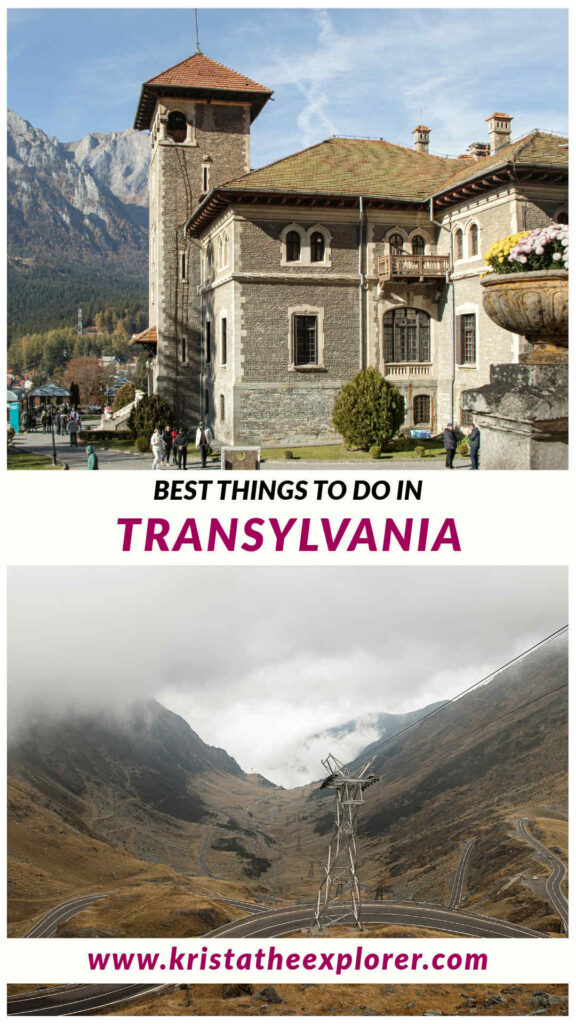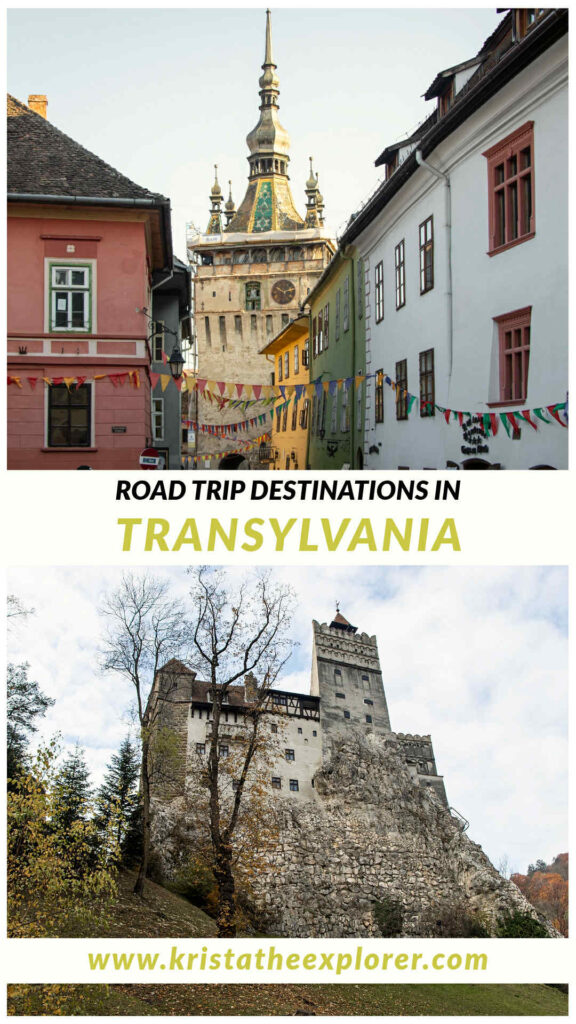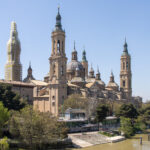Transylvania has a lot more going for it than tales of Dracula. It’s a storybook region in central Romania that’s filled with ancient forests, breathtaking medieval castles, and picture-perfect villages that still retain much of their historic charm. A lot of the best things to do in Transylvania are within easy driving distances from one another, which makes it the perfect region to plan a road trip around.
The region of Transylvania was once part of the Roman Empire, and it’s been shaped by the unique mixture of cultures that have called it home over the centuries. In the 12th century, for example, the Saxons settled here from Germany and fortified many towns such as Sighisoara and Sibiu. The region later came under Ottoman rule and was part of the Austro-Hungarian Empire, before becoming part of Romania as we know it today. There’s definitely no shortage of things to do in Transylvania, and the best way to explore this region is by planning a road trip here.
Renting a car in Romania
During our trip to Romania, we flew into Cluj-Napoca (worth visiting for a day if you have time) which is a good starting point for a road trip. There are a lot of local rental companies offering extremely cheap deals, but after doing some research it unfortunately seems like a lot of them don’t have a good reputation and scam a lot of their customers. To avoid this problem, we opted for Enterprise even though they were more expensive. Their office is located directly inside the airport terminal and a staff member will bring the rental car right to the doors of the arrival hall for you.
Since we were flying out of Bucharest, we added the option of returning the vehicle to another location for an additional fee. Overall, we were very pleased with the car we received and the customer service was great. We weren’t charged any extras after we returned the car either, which seems to be a big problem with many car rental companies in Romania.
Best Things to Do in Transylvania
Bran Castle
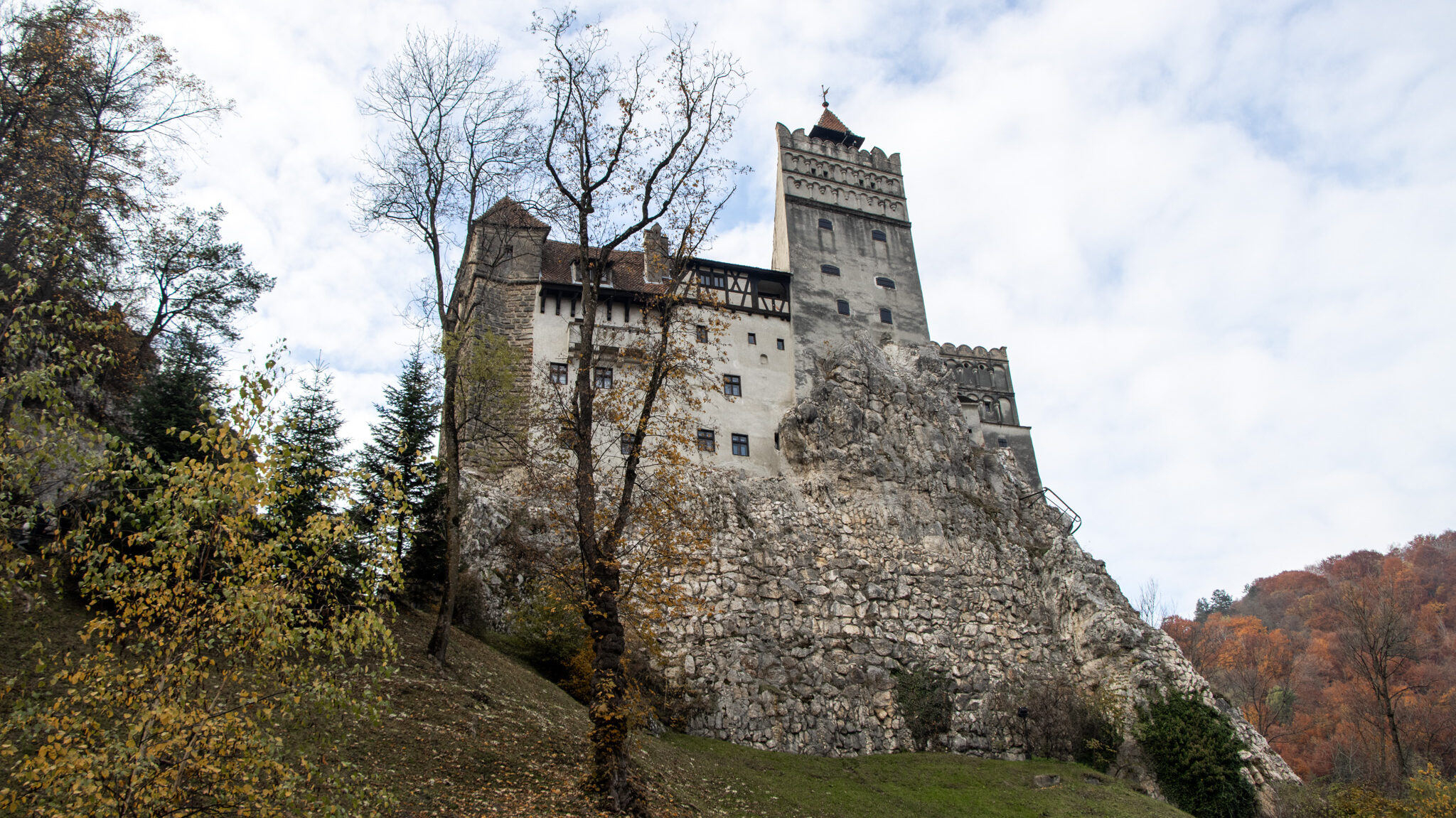
Although there’s a lot more things to do in Transylvania than visit Dracula’s castle, you should add Bran Castle to your itinerary if you haven’t been before. It was originally built in the 14th century as a defensive fortress and it later became a royal residence. Today, visitors are able to explore the interior of the castle and step back in time, with plenty of hidden passageways and narrow staircases to maneuver through. There are a few extras that you can add to your standard entry ticket as well, such as the torture chamber and the time tunnel.
What Bran Castle is most famous for is its ties to Bram Stoker’s Dracula. The imposing nature of the castle, surrounded by mountain views and dense forests, make it look like it’s come straight out of a novel. Although its ties to Vlad the Impaler are up for debate, over the years the castle and the town of Bran have become synonymous with the famous vampire.
Brasov
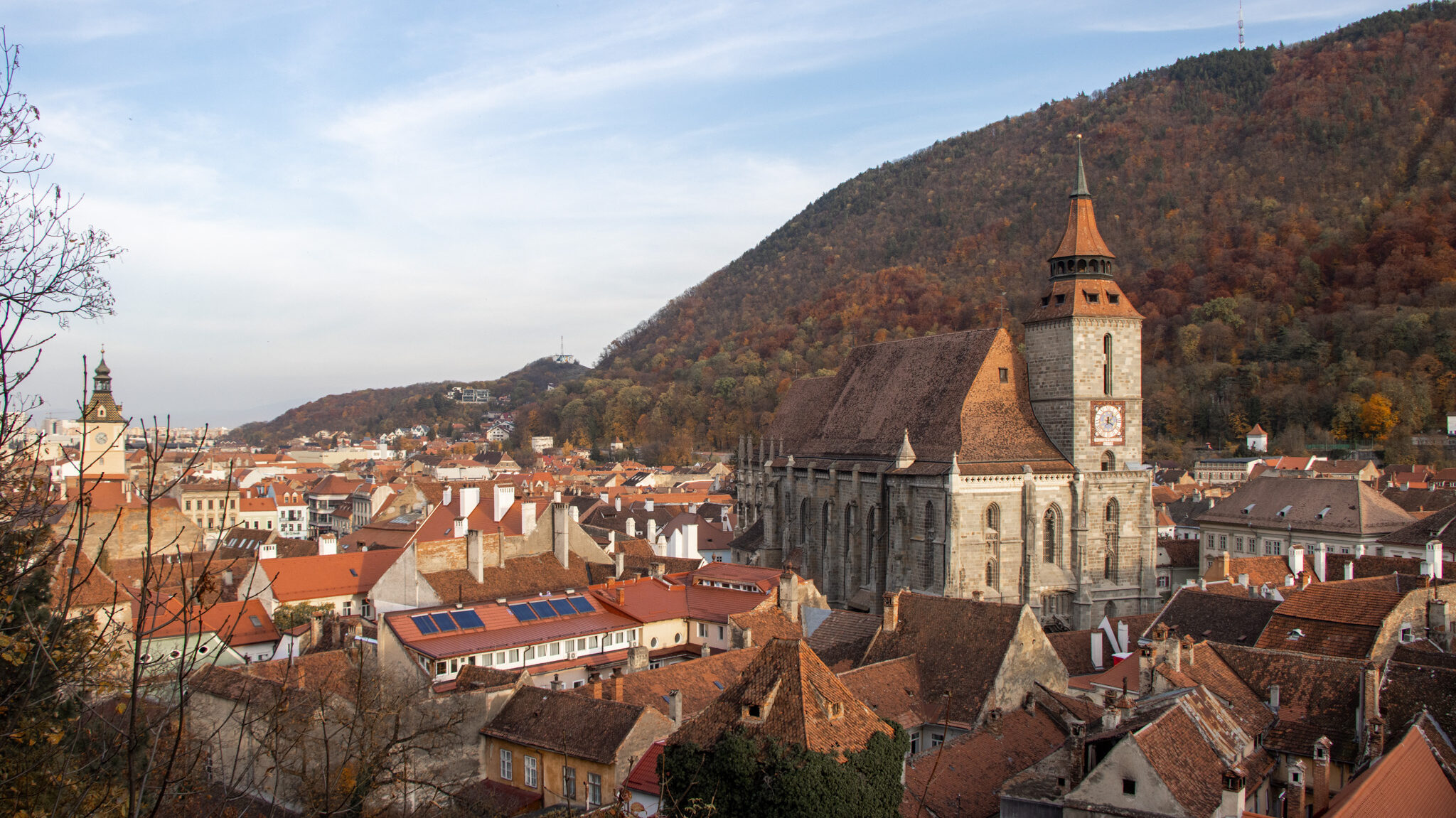
Visiting Brasov is one of the best things to do in Transylvania at any time of the year. It was founded by Saxons in the 13th century who fortified the area at the request of the Hungarian monarch. The city later developed into a huge medieval trading hub with various cultural influences that still shape the city today. Anyone who’s interested in historic places will love spending a day in Brasov.
Brasov is a city that offers the perfect blend of natural beauty and medieval charm, with places like Piata Sfatului, Catherine’s Gate, and the Black Church being a few of the main attractions in Brasov. If you’re interested in hiking, there are plenty of trails nearby too, or you can take the cable car up Mount Tampa for an incredible view of the region. And, let’s not forget about the food scene either, which was a pleasant surprise when we visited.
Rasnov Citadel
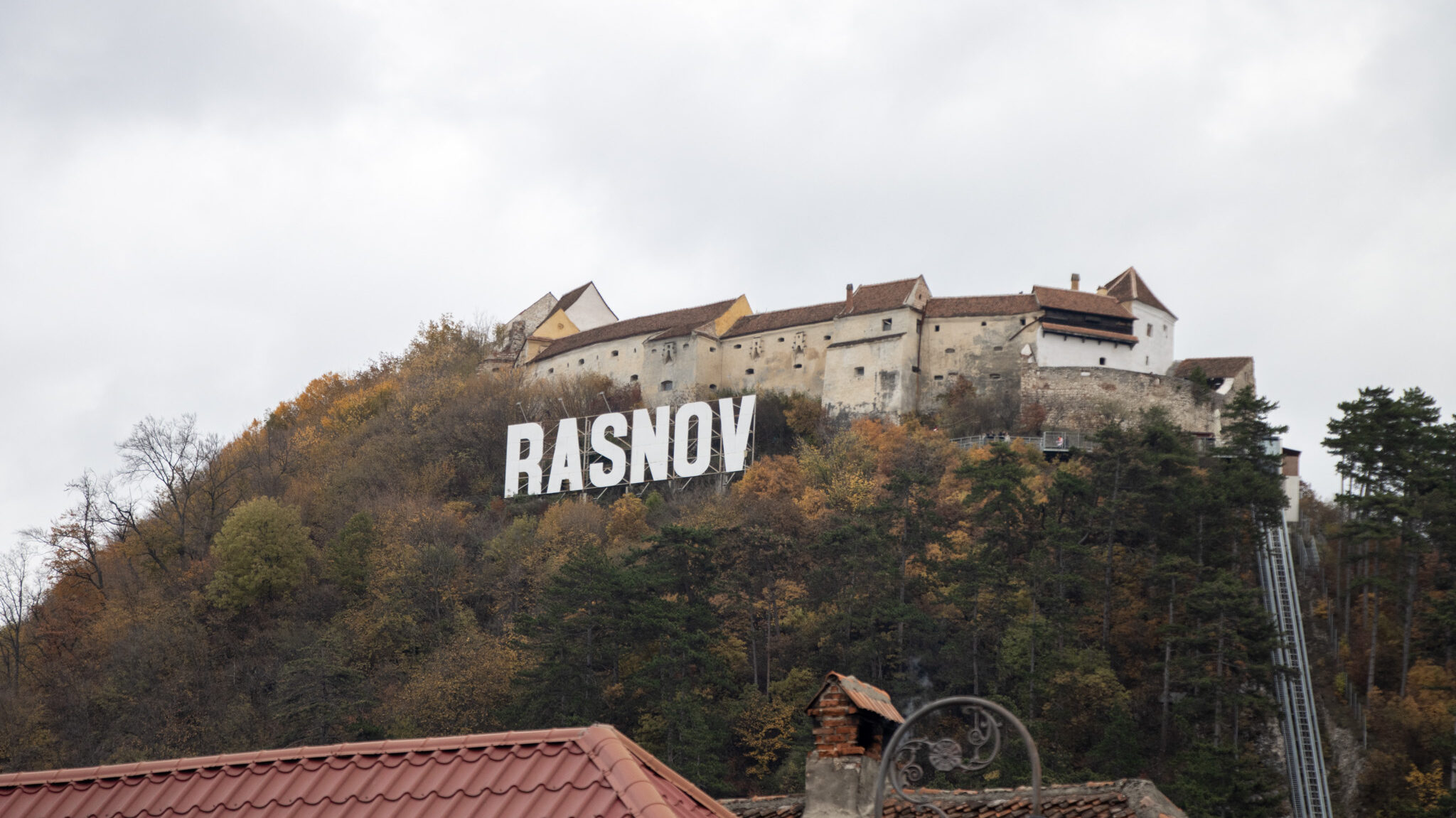
Just outside of Brasov lies Rasnov Citadel. The hill that the citadel sits on has had fortifications in place since prehistoric times, but the medieval stone fortress dates back to the 13th century. It played a very important role in defending the local community from various conflicts over the centuries, and it’s only fallen once over the past 800 years. It’s a very impressive citadel to admire from below, but if you have the time I’d recommend going inside too.
Visitors have the option of hiking up to Rasnov Citadel or using the cable car to reach the summit. Sadly, the citadel was closed when we visited Romania in October, but it’s considered one of the top things to do in Transylvania during a road trip, especially if you want to visit less touristy attractions.
Rucar-Bran Pass
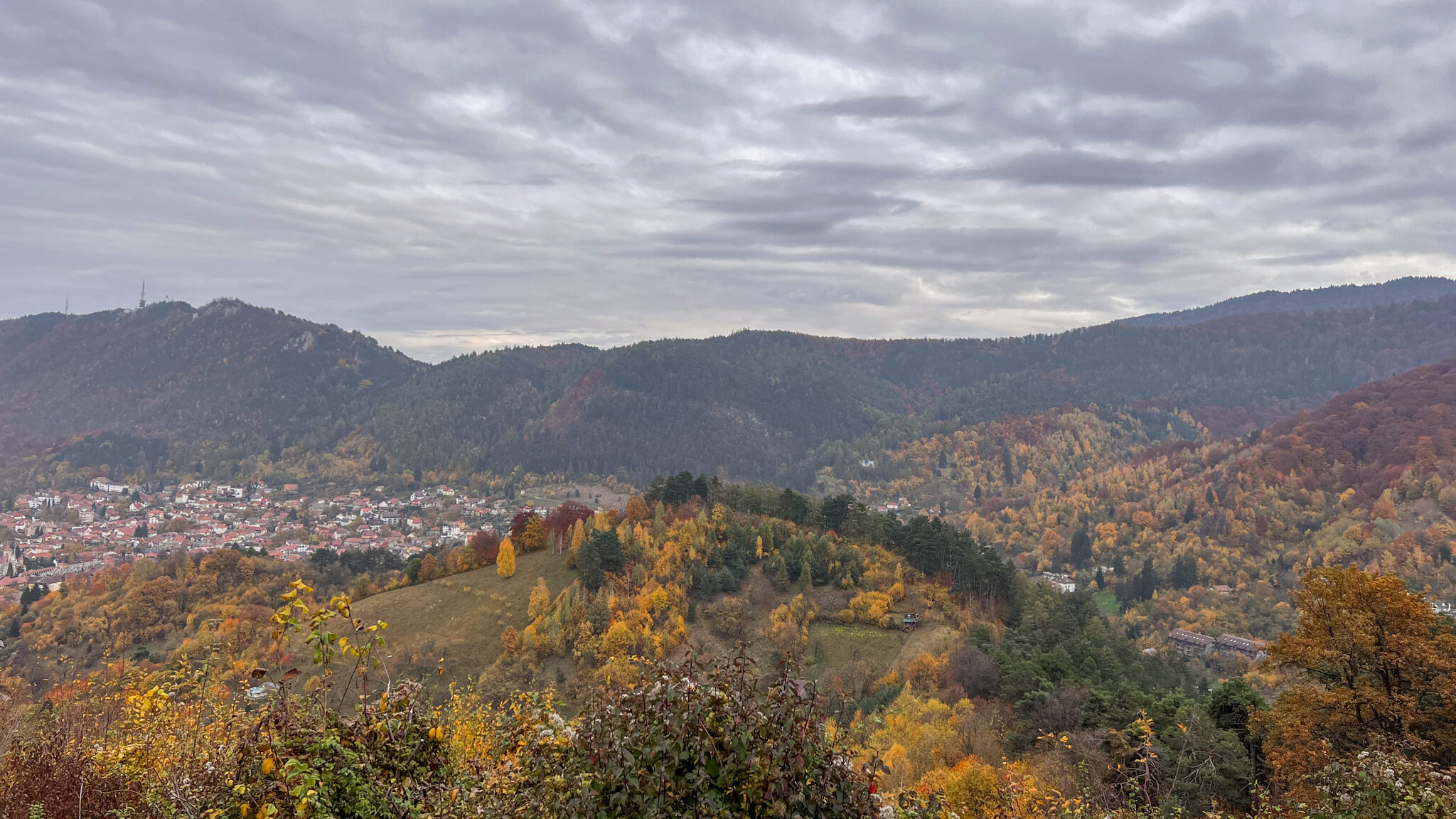
As you make your way around Transylvania, you’ll no doubt come across some beautiful driving routes. The Rucar-Bran Pass is one of the easier drives we went on, which led us directly into Bran. It’s a scenic driving route that features lush valleys, cliffsides, and limestone gorges, and it’s especially beautiful to drive through in the autumn time. This pass has served as the main trading and military route between Transylvania and Wallachia since the medieval period, so there’s a lot of interesting historic sites to visit along it as well.
Corvin Castle

One of my favourite castles in Romania is Corvin Castle, also known as Hunyadi Castle. It’s one of the most impressive and well-preserved medieval fortresses in all of Europe, located in the southwestern corner of Transylvania, on the way to Timisoara. Corvin Castle was built in the 15th century and it served as a noble residence and a military stronghold. It was later expanded with Renaissance features added by Matthias Corvinus.
Although Corvin Castle is often overshadowed by Bran Castle, it’s definitely worth making time to see. In fact, Corvin Castle is where Vlad the Impaler is believed to have been held prisoner for several years, so you could say it has more of a claim to be Dracula’s castle than Bran Castle does. Regardless, even if you don’t have time to go inside the castle, visiting Corvin Castle is still considered to be one of the best things to do in Transylvania for history enthusiasts.
Carta Monastery
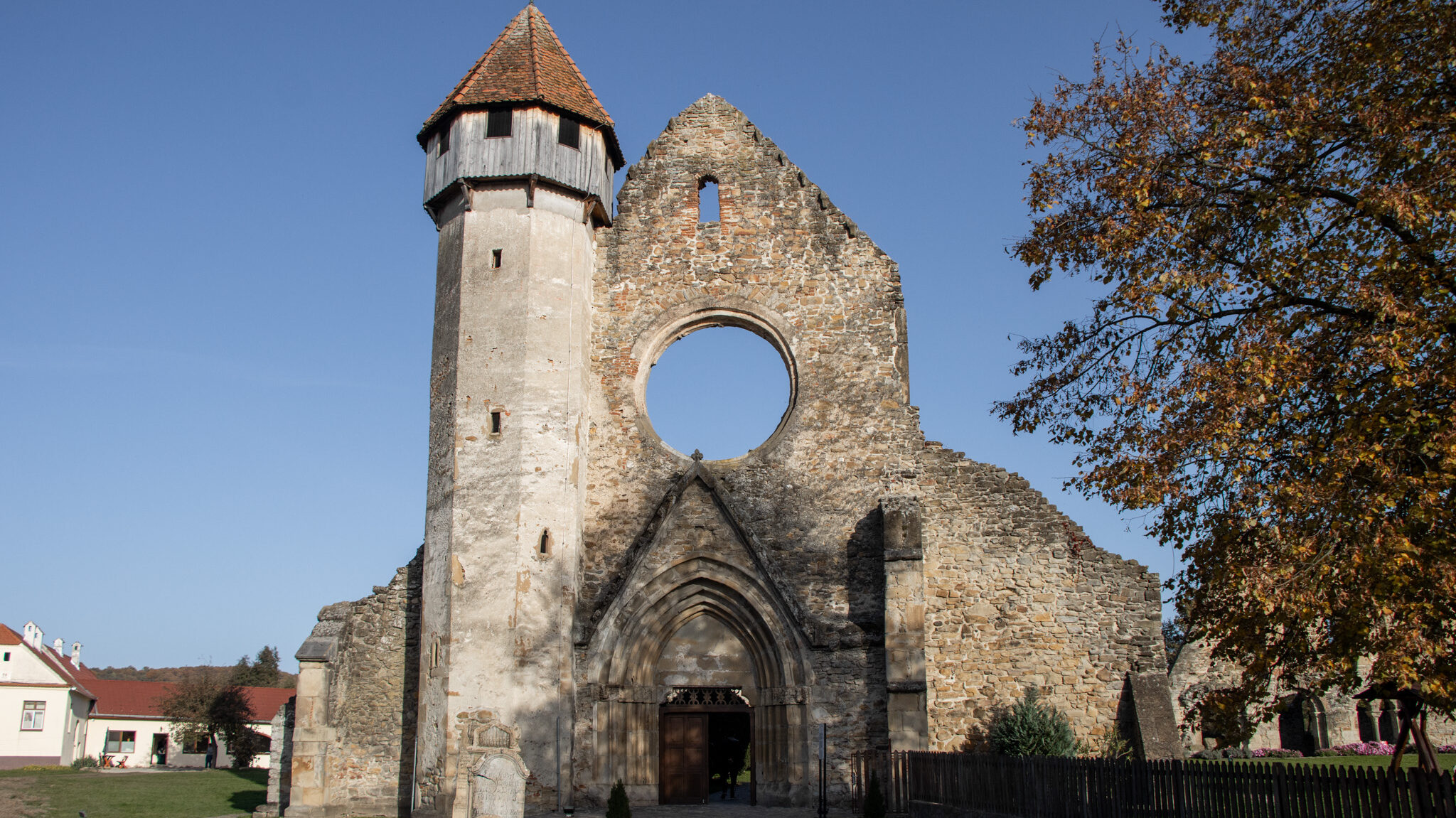
If you’re looking for off the beaten path attractions in Transylvania, you’ll want to add Carta Monastery to your Romania itinerary. This beautiful medieval Cistercian abbey was founded in the early 13th century and it’s only a short drive from Sibiu. It features one of the earliest examples of Gothic architecture in Eastern Europe, and it’s layered with history and legends. The abbey was almost constantly rebuilt since it was founded due to foreign invasions and political tensions, but its ruins are still very impressive to walk around.
There’s a very small entry fee to enter the grounds of the monastery, which will need to be paid in cash. Once you have your ticket, you can learn more about the history of Carta Monastery inside the small on-site museum before heading into the grounds. The monastery is located in a tiny village, so chances are you won’t find many people here. While this may not be considered one of the top things to do in Transylvania, it’s still a fascinating historic attraction to explore.
Sibiu
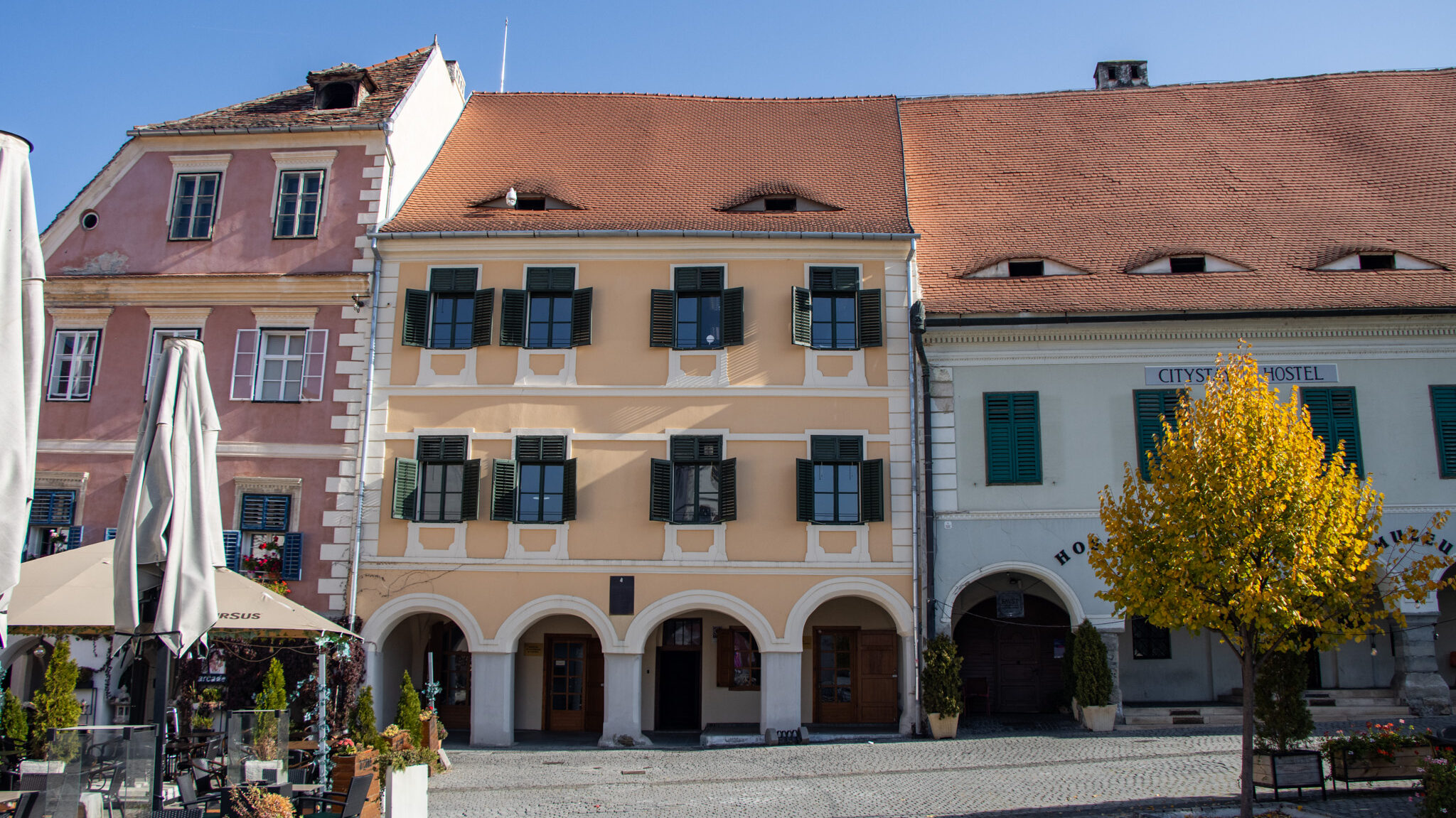
One of the most unusual places to visit in Romania is Sibiu. This picture-perfect medieval city boasts an impressive old town that’s dominated by what’s known as the “Eyes of Sibiu”, which are essentially windows on the roofs that are shaped like eyes looking down at you. Sibiu was founded in the 12th century by Saxon settlers and it quickly became a key fortified town in Transylvania. It also saw periods under Ottoman and Hapsburg rule before joining modern day Romania in 1918.
Sibiu’s old town is very vibrant, and it often hosts arts festivals and other events, which is what helped it to be named European Capital of Culture in 2007. As well as the famous “Eyes of Sibiu”, other attractions to look out for are the Piata Mare, Piata Mica, Brukenthal Palace, and the city’s massive Lutheran cathedral. Spending at least half a day in Sibiu is considered to be one of the best things to do in Transylvania – just be prepared for lots of tourists in the summer season if that’s when you intend to visit.
Sighisoara
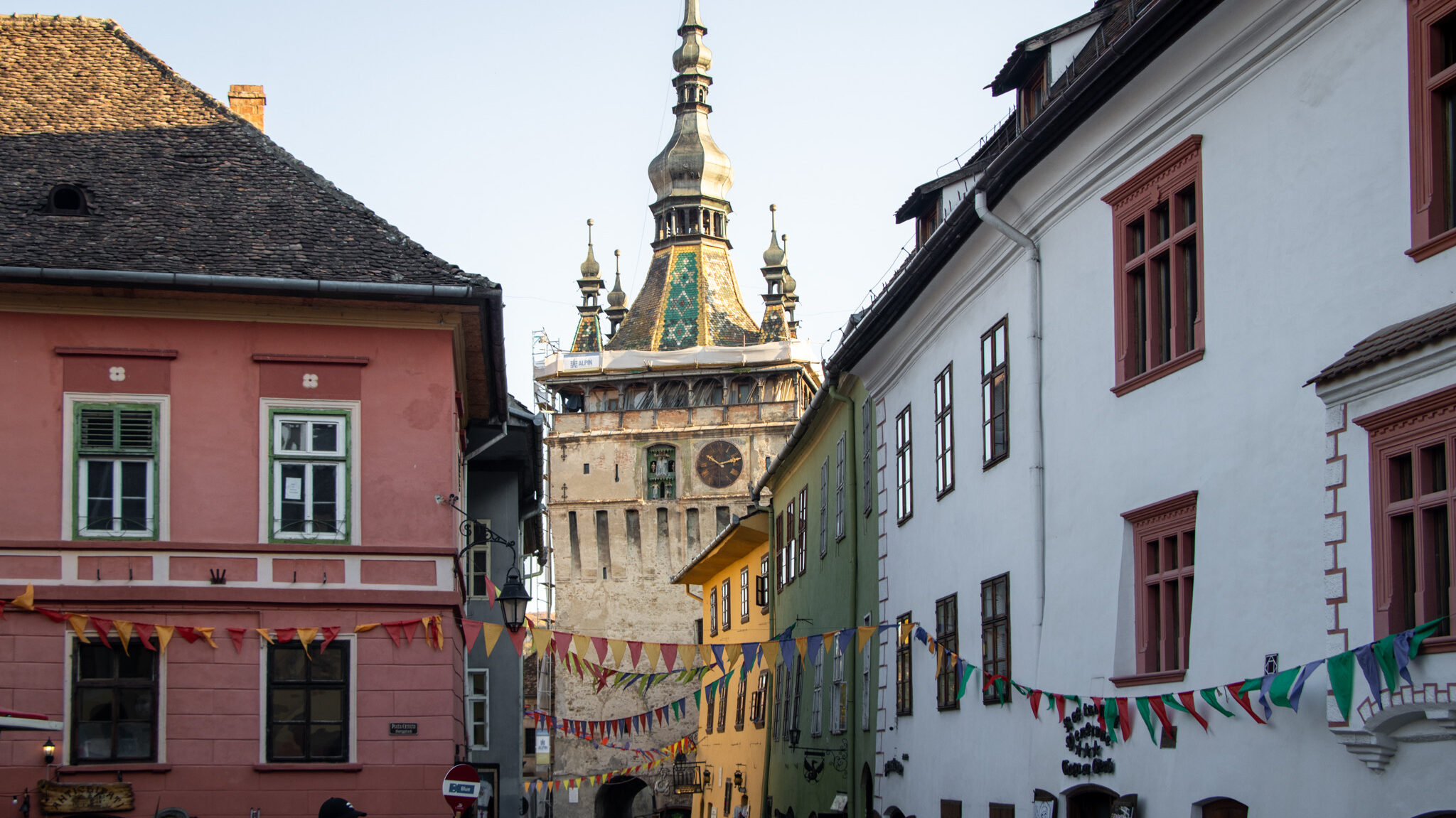
If you’ve come to Romania in search of Dracula locations, make sure you incorporate Sighisoara into your plans. It’s known for being the best preserved citadel in Eastern Europe, and since 1999 it’s been a UNESCO World Heritage Site. Sighisoara was built in the 12th century as yet another fortified Saxon town. As you make your way through the cobbled streets, you’ll find yourself surrounded by panoramic views, historic landmarks, and unique artisan shops that are worth going inside.
As well as its medieval architecture, Sighisoara is also famous for being the birthplace of Vlad the Impaler, the historical figure behind Dracula. In fact, his house is still standing. There’s a plaque on the wall indicating which house it is, and the house is now a museum, but it’s not really worth going inside in my opinion. Sighisoara can get very crowded with tour groups, so try to arrive as early as possible if you can.
Transfagarasan Highway
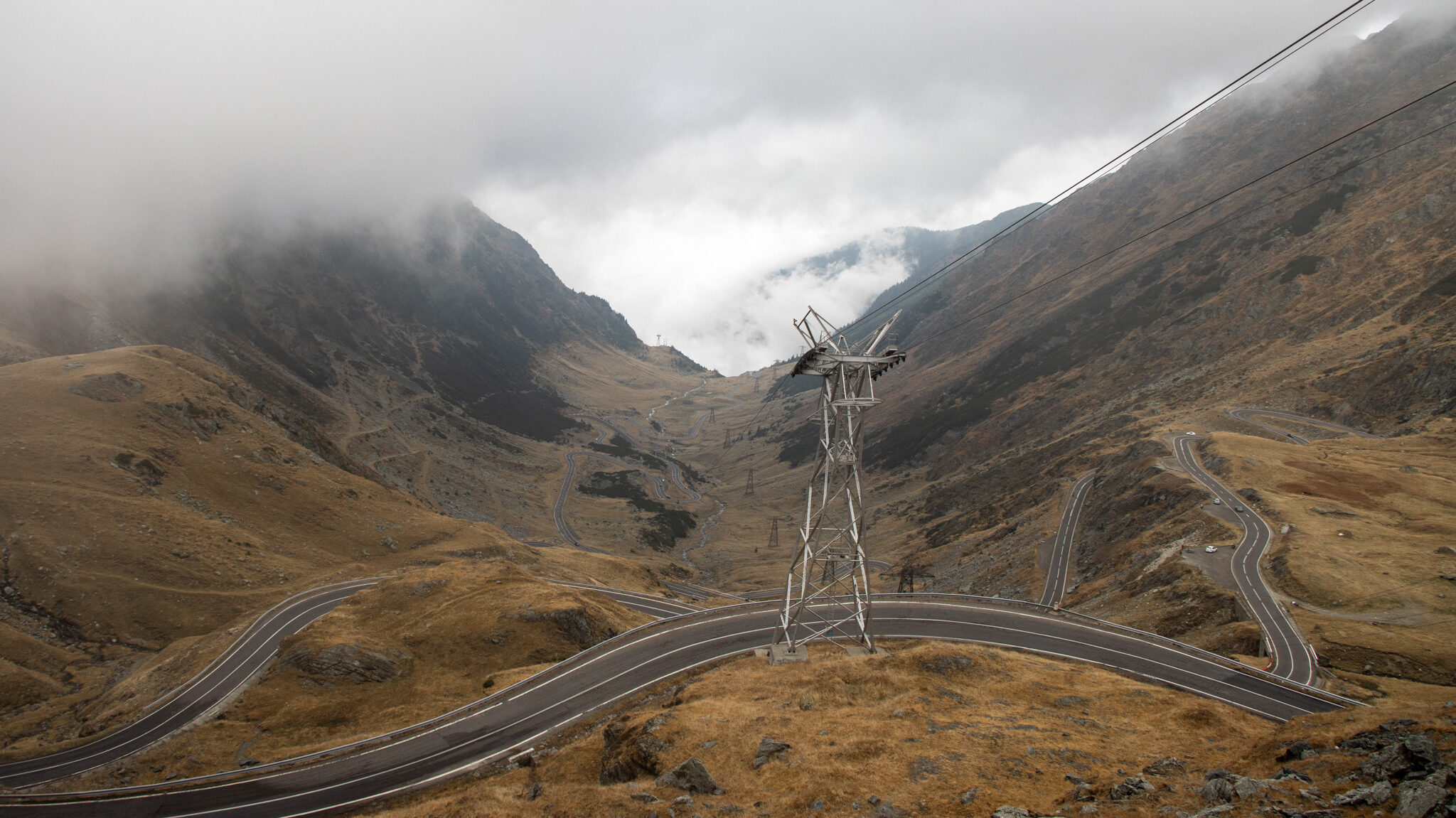
One of my favourite things to do in Transylvania is to drive along the Transfagarasan Highway. It’s considered to be one of the world’s most dangerous driving routes, stretching for 151 km from Pitesti in Wallachia to Cartisoara near Sibiu. It’s Romania’s second highest paved road and it was completed in 1974, though hundreds of people died during its construction.
The highway was originally built as a military route to ensure fast troop movement in case of a Soviet invasion, but today it’s one of the country’s top driving routes offering incredible views along the way. We drove to the top of the Transfagarasan Highway near sunrise, which turned out to be a bad decision due to the low lying clouds around the summit. However, after waiting inside at a restaurant, we did manage to get some nice views as the clouds started to disperse.
Balea Lake
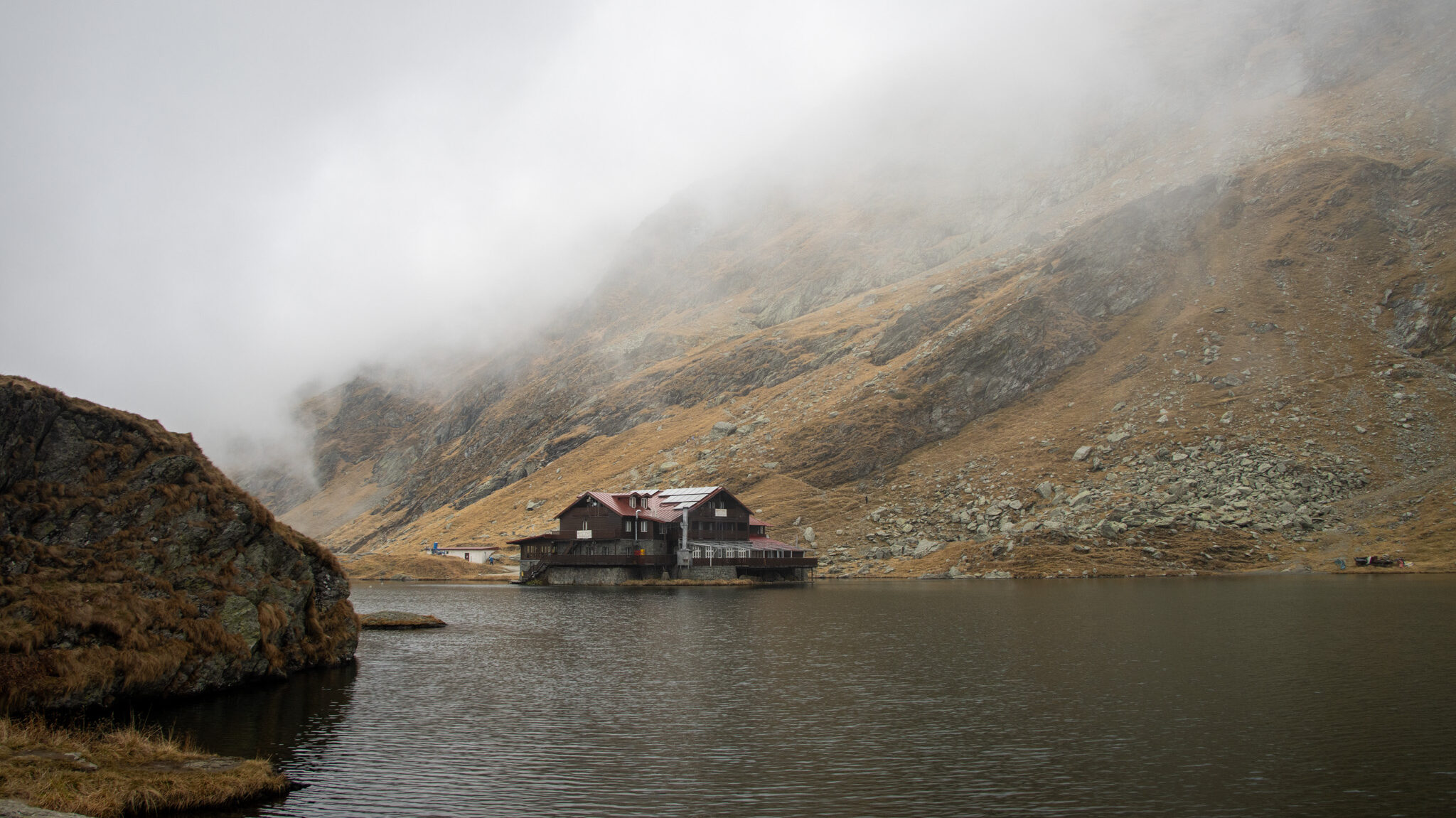
If you make it to the top of the Transfagarsan Highway, don’t forget to stop at Balea Lake. This is one of the main highlights along the highway and it’s surrounded by wooden chalets. It’s said that the name comes from a local shepherd named Balea who died here with his one true love while wrestling a bear. Apart from this intriguing backstory, Balea Lake offers a dramatic alpine setting that’s surrounded by opportunities for outdoor activities such as hiking, cycling, and skiing.
There’s a large paid parking lot next to Balea Lake or you can park along the side of the road for free if there’s any spaces available. You’ll find a lot of food and tacky souvenir stalls set up near the entrance to the lake, but I’d avoid them and either bring food with you or get something to eat or drink at the restaurant overlooking Balea Lake instead.
Peles Castle and Pelisor Castle
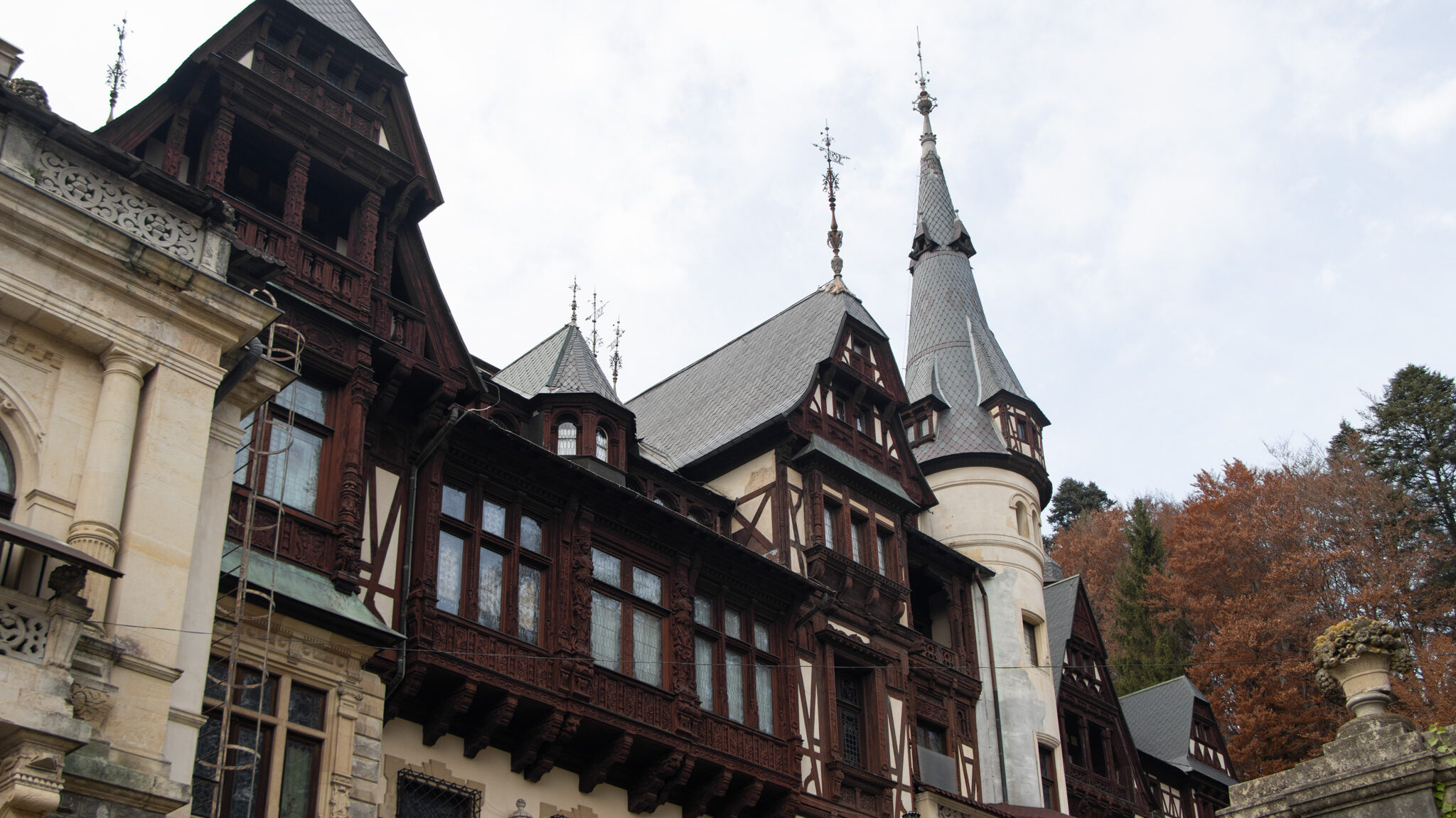
There are a lot of incredible castles to visit around Transylvania, and many are located within a short drive from one another. Both Peles Castle and Pelisor Castle are located in the same grounds in Sinaia, though Peles Castle gets spoken about more. Peles Castle is the most impressive royal residence in Romania, even though it wasn’t commissioned until the late 19th century. It was the first palace to be fully powered by electricity and to have its own heating, with over 160 rooms with features such as intricate woodwork, exquisite art collections, and unique pieces of armour. The palace was used as a royal residence until 1947, and in 1953 it was opened to the public as a museum.
A 5 minute walk from Peles Castle will bring you to the doors of Pelisor Castle. It was completed in 1902 in the Art Nouveau style, and it was designed to be a retreat for the royal family. Inside you’ll find it to be much more intimate than Peles Castle, with a cozy chapel, oak interiors, and an ornate Golden Room being just some of the many features visitors are told to look out for. We opted to skip the inside of Pelisor Castle as we were short on time, but we still took a few photos of it from the outside.
Cantacuzino Castle
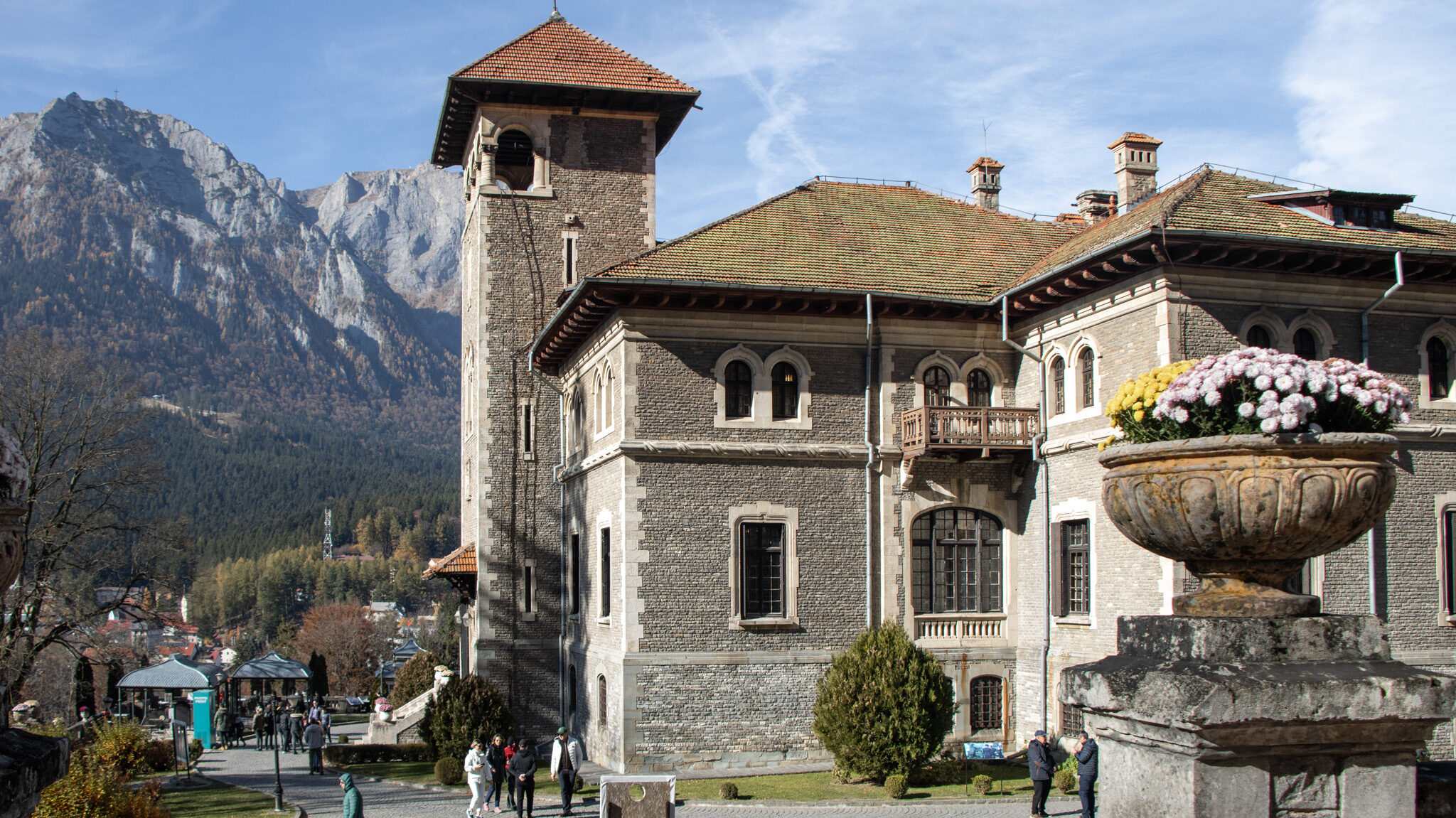
Any fans of the hit TV series Wednesday on Netflix will instantly recognize Cantacuzino Castle. This neo-Romanian castle is a must-see in Romania, though it has a short-lived history as it was only completed in 1911. It was built on the site of an old hunting lodge, with a pavilion-like layout and carved stone facades. Around the grounds you’ll also come across stunning mountain views, grottos, and water features, as well as some modern art installations that are fun to take photos with.
There’s ample parking available on the castle grounds, though a lot of people choose to park along the road leading up to the castle. This causes a lot of traffic flow problems, so your best option is to be safe and park on-site. There’s a small entry fee to access the grounds and park, and you’ll need a separate ticket to enter the castle itself. We opted not to take a tour inside, but I’d highly recommend visiting the grounds at least.
Turda Salt Mine
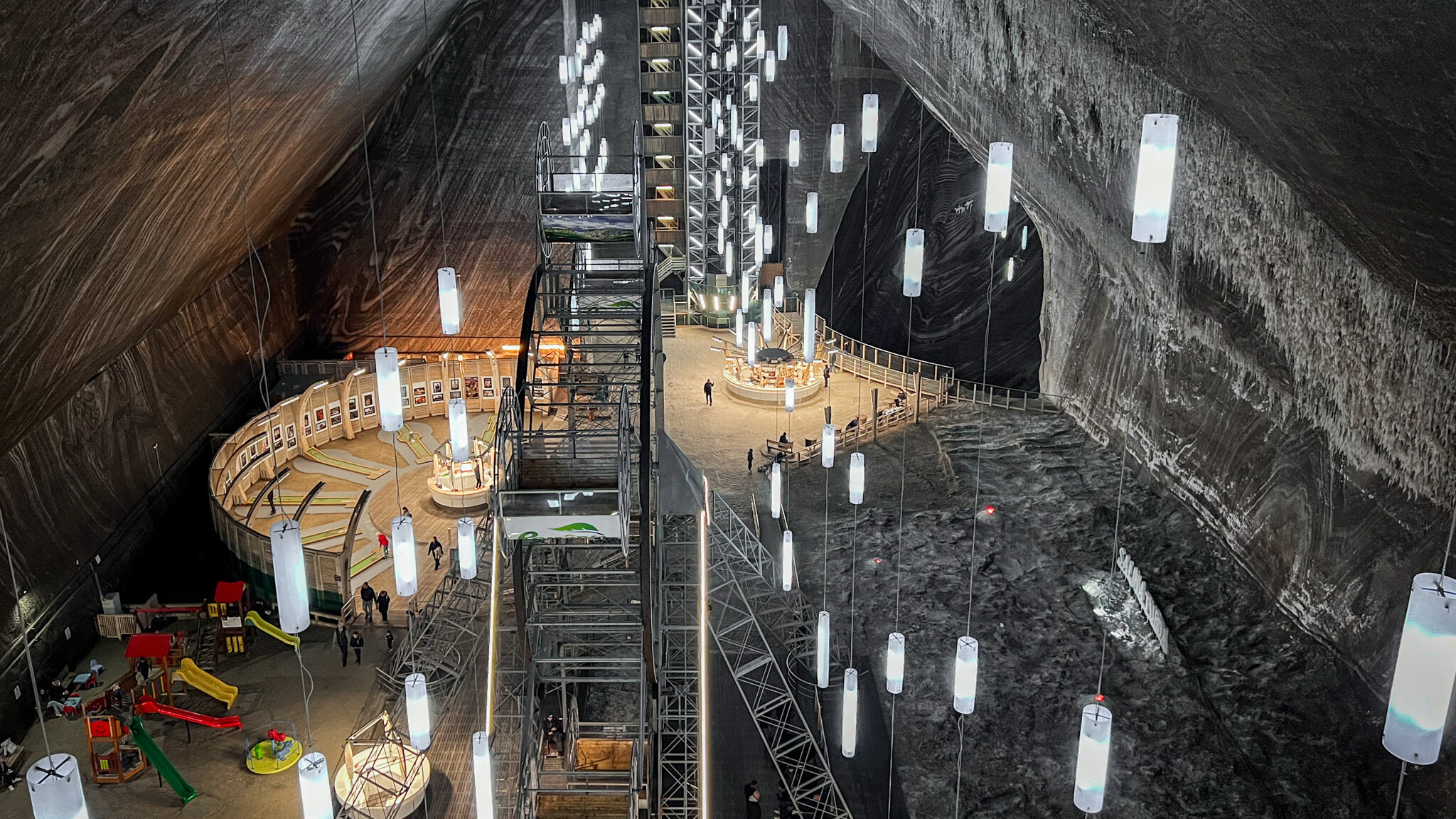
One of the most unique things to do in Transylvania is to explore the Turda Salt Mine. It’s located a short drive from Cluj-Napoca, so it’s a great stop along any road trip in this part of Romania. Mining in this area dates back to the 11th century, and salt extractions continued until 1932. Today, visitors can catch a glimpse of several important machines that were used in the extraction process in the 19th century and learn more about the history of the mine itself.
However, what a lot of people go to see are the impressive modern transformations inside the mine. There are many chambers to explore in the Turda Salt Mine, some of which have been turned into somewhat of an amusement park with a Ferris wheel, boat rides, and mini golf available – just to name a few activities. It’s an incredible experience and there’s nowhere else quite like it in Europe.
Planning a road trip around Transylvania
Transylvania is an incredible region in Romania to explore. Planning a road trip here is a lot of fun because there are so many unique places and things to do in Transylvania that could be added to your itinerary. From a history perspective, the region is bursting with options, from medieval castles to Saxon-era fortified old towns and historic driving routes. We drove around Transylvania in October and we lucked out with perfect weather for two weeks. Most of the places we visited weren’t very crowded either.
Make sure you do some research beforehand so you can pack appropriate clothing for the time of the year you intend to visit Romania. You’ll also want to double check that certain driving routes are open, as some close in the off season due to poor visibility and bad weather conditions.
If you have any questions about things to do in Transylvania or how to plan a road trip in Romania, please feel free to reach out. You can get in touch via email or through the contact form on my website. Remember to follow along with my travels on Instagram and TikTok as well, where you’ll hopefully find even more travel inspiration for your upcoming European adventures.
This post may contain affiliate links, which means I may earn a commission from the discount codes used or when a link/ad is clicked. All purchases made will come at no extra cost to you, and I only include products and services that I would personally recommend.
Pin this blog post for later!
